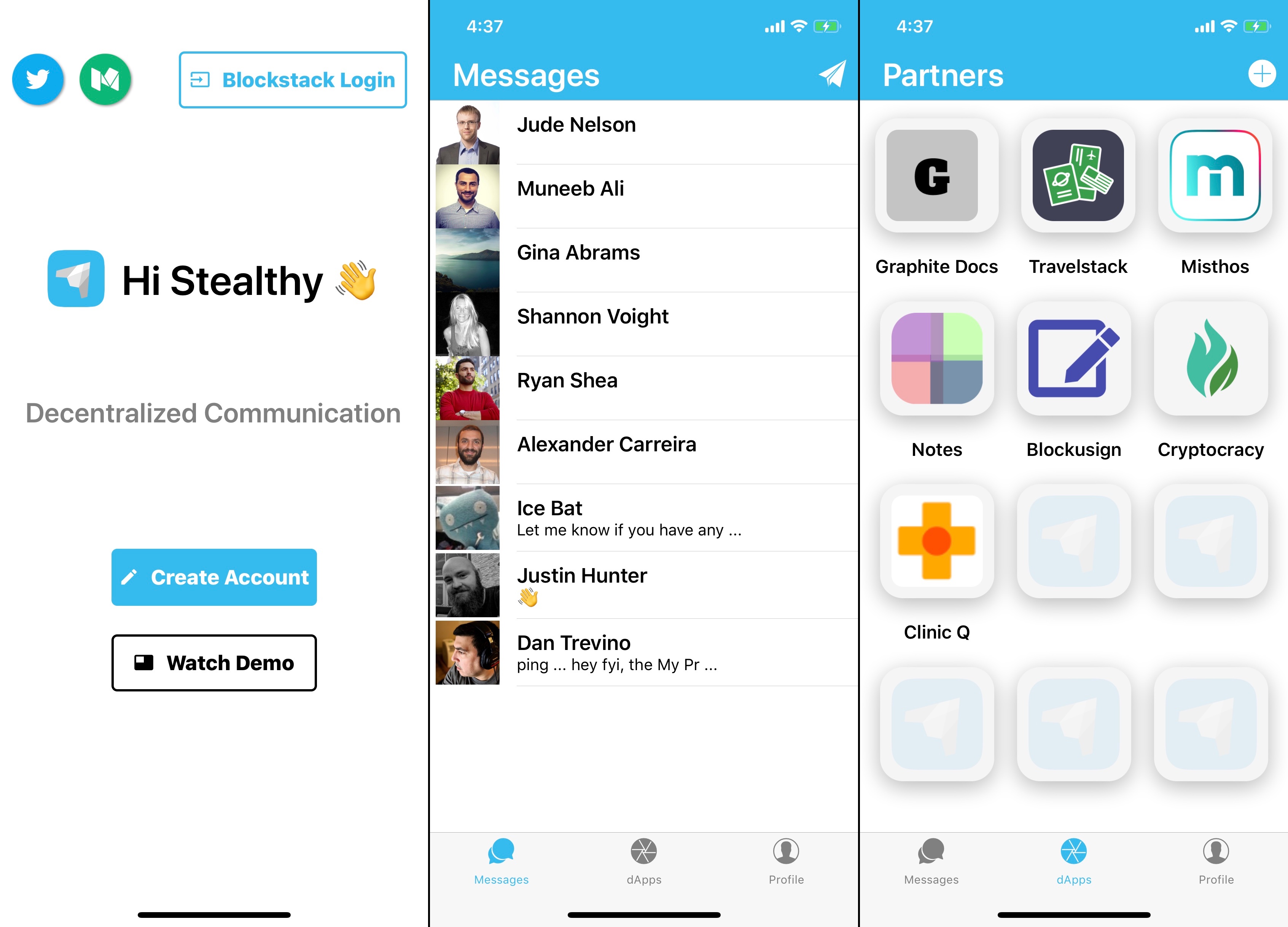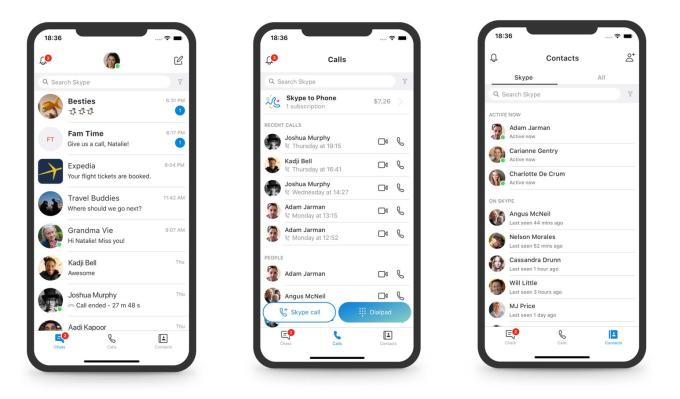Apps
Auto Added by WPeMatico
Auto Added by WPeMatico
Let the computers do the legal busy work so attorneys can focus on complex problem solving for their clients. That’s the lucrative idea behind Atrium LTS, Twitch co-founder Justin Kan’s machine learning startup that digitizes legal documents and builds applications on top to speed up fundraising, commercial contracts, equity distribution and employment issues. For example, one of its apps automatically turns startup funding documents into Excel cap tables.
Automating expensive legal labor has led to a rapid rise to 110 employees and 250 clients for Atrium, including startups like Bird and MessageBird. Atrium only came of stealth a year ago with a $10.5 million party round before going into Y Combinator last winter. Today it announces it’s raised a $65 million round led by Andreessen Horowitz.
In characteristic dude fashion, Kan tells me “I’m pretty stoked about that because of having more resources for Atrium.” The venture firm’s partner Andrew Chen is taking a board seat and famed co-founder Marc Andreessen is joining as a board observer. “I wanted a visionary who’s always going to be pushing us to build something really big,” Kan says. General Catalyst, YC’s Continuity Fund and Ashton Kutcher’s Sound Ventures are also joining the round.

With the massive influx of cash, Atrium will be able to develop more internal tools it can use to crank out client work faster than its traditional competitors. “We can ultimately be this platform on top of which you’re building these legal businesses and eventually other professional services and software services,” Kan explains.”They’re all sitting on top of the platform that understands legal documents.”
In more Atrium news, Y Combinator’s leading partner Michael Seibel will join the startup’s board, too. And it’s acquired Tetra, a YC artificial intelligence startup that had raised $1.5 million to analyze voice, “to help us build our platform that understands and structures data,” Kan tells me.
What Kan didn’t initially mention is that two of Atrium’s co-founders, CTO Chris Smoak and legal partner BeBe Chueh, have left. He later admitted they had transitioned out of the company several months before the new funding. “BeBe wanted to spend time working on family (she just got engaged); Chris and I disagreed on his job role” regarding the definition of the CTO position, Kan tells me. He’ll now be running Atrium with remaining co-founder Augie Rakow, formerly of mega-law firm Orrick, and Kan’s long-term business partner and former McKinsey analyst Nick Cortes.

Justin Kan (Atrium) at TechCrunch Disrupt SF 2017
The law firm business model has left the door open for disruption by technology companies like Atrium. “Law firms generate revenue from hourly billing, and lack an incentive to vastly improve efficiency,” Chen writes. “Many law firms dividend out all their profits at the end of each year, making it hard to invest in the expensive investment of building software. Software is hard to build inside a software company, much less a law firm.”
But Atrium is an engineering company with a legal clientele. It takes the most common and time-consuming activities — often related to ingesting mountains of documents — and builds machine learning workarounds. Atrium’s lawyers can focus on advising their clients on what to do, rather than burning the midnight oil doing it as they look for tiny quirks in the paperwork. The legal services get faster, cheaper and more predictable, so Atrium can offer upfront pricing. It’s been using fundraising workshops and other educational materials to drum up leads.
For now, Atrium’s tech is limited to a narrow band of use cases. But “over $300 billion is spent per year in the enterprise legal market,” Chen writes, so there’s plenty of room to grow now that Atrium is well capitalized. It will have to convince big corporations to ditch the old way and let computers lend a hand. Luckily, Atrium isn’t a SAAS company forcing clients to use the tech themselves. Done right, they shouldn’t even know that it’s machine vision software, not junior associates, pouring over their docs. It will have to out-match fellow legal tech startups like Ravel, CaseText, Judicata, Premonition and more, though they’re often just tools rather than software-equipped law firms.
Kan also cops to his lack of experience in legal. “I think for any full stack vertical startup started by a non-subject matter expert (i.e. me who is not a lawyer), there is a risk that you come in and are very prescriptive on how things work. Then you build software that says ‘the providers must do it this way!’,” Kan tells me. “But the practical reality is that it doesn’t work with the nuanced, non-linear workflows that providers already have. So the technology doesn’t get adopted and fails to provide value. That to me is the biggest upcoming risk.”

Justin Kan, from lifevlogger to legal giant
Yet if Atrium can ease clients into this new world service by service, it could generate network effects that fuel the whole business. It’s just a matter of prioritization. “One of the things I always need to be focused on is…focusing. That’s sometimes a blind spot.” From Justin.tv to Twitch to its acquisition by Amazon to his role as YC partner, Kan delivers, but can be frenetic. “As an entrepreneur, I have a tendency to take on too much.”
But after leaving YC because “I had felt like I’d stopped learning,” Kan has found the legal space so full of knowledge and opportunity that it can hold his attention. “Part of why I like this business is because it was so different. I didn’t think it was something that would be as easily competed with,” Kan recalls. “I had this calendar company and Google came out with something similar. I told [Twitch co-founder] Emmett ‘We have to do something no one can compete with. At least Google will never do this.’ Then they did.”
But unlike with that game streaming startup, Atrium doesn’t have to worry about beating or getting bought by some legal tech giant. Instead, it wants to become one.
Powered by WPeMatico
Now valued at $5.6 billion, zero-fee stock trading app and cryptocurrency exchange Robinhood is starting preparations to go public. Just a year and a half ago, it was still largely under the radar. But then it raised a $110 million Series C at a $1.3 billion valuation in April 2017 and then just a year later scored a $363 million Series D, both led by Russian firm DST Global. Combined with the growth of its premium subscription for trading on margin called Robinhood Gold, the startup now has the firepower and revenue to make a viable Wall Street debut.
Today during Robinhood CEO Baiju Bhatt’s talk at TechCrunch Disrupt SF, he revealed that his company is on the path to an IPO and has begun its search for a chief financial officer. It’s also undergoing constant audits from the SEC, FINRA and its security team to make sure everything is kosher and locked up tight.
The CFO hire could help the five-year-old Silicon Valley startup pitch itself as the cheaper youthful alternative to E*Trade and traditional stock brokers. They’d also have to convince potential investors that even though cryptocurrency prices are in a downturn, allowing people to trade them for cheaper than competitors like Coinbase is a powerful user acquisition funnel.
Robinhood now has 5 million customers tracking, buying and selling stocks, options, ETFs, American depositary slips receipts of international companies and cryptos like Bitcoin and Ethereum. That’s twice as many customers as its incumbent competitor E*Trade despite it having 4,000 employees compared to Robinhood’s 250.
The startup has raised a total of $539 million to date from prestigious investors like Andreessen Horowitz, Kleiner Perkins, Sequoia and Google’s Capital G, allowing it to rapidly roll out products before its rivals can react. This rapid rise in valuation can go to some founders’ heads, or crush them under the pressure, but Bhatt cited “friendship” with his co-CEO Vlad Tenev as what keeps him sane.
The startup has three main monetization streams. First, it earns interest on money users keep in their Robinhood account. Second, it sells order flow to stock exchanges that want more liquidity for their traders. And it sells Robinhood Gold subscriptions which range from $10 per month for $2,000 in extra buying power to $200 per month for $50,000 in margin trading, with a 5 percent APR charged for borrowing over that. Gold was growing its subscriber count at 17 percent per month earlier this year, showing the potential of giving trades away for free and then charging for extra services.

But Robinhood is also encountering renewed competition as both startups and incumbents wise up. European banking app Revolut is building a commission-free stock trading, and Y Combinator startup Titan just launched its app that lets you buy into a managed portfolio of top stocks. Finance giant JP Morgan now gives customers 100 free trades in hopes of not being undercut by Robinhood.
Over on the crypto side, Coinbase continues to grow in popularity despite its 1.4 percent to 4 percent fees on trades. It’s rapidly expanding its product offering and the two fintech startups are destined to keep clashing. Robinhood may also be suffering from the crypto downturn, which is likely dissuading the mainstream public from dumping cash into tokens after seeing people lose fortunes as Bitcoin and Ethereum’s prices tumbled this year.
There’s also the persistent risk of a security breach that could tank Robinhood’s brand. Meanwhile, the startup uses both human and third-party software-based systems to moderate its crypto chat rooms to make sure pump and dump schemes aren’t running rampant. Bhatt says he’s proud of making cryptocurrency more accessible, though he didn’t say he felt responsible for prices plummeting, which could mean many of Robinhood Crypto’s users have lost money.

Fundamentally, Robinhood is using software to make the common but expensive behavior of stock trading much cheaper and more accessible to a wider audience. Traditional banks and brokers have big costs for offices and branches, trading execs and TV commercials. Robinhood has managed to replace much of that with a lean engineering team and viral app that grows itself. Once it finds its CFO, that could give it an efficiency and growth rate that has Wall Street seeing green.
Powered by WPeMatico
Meet Stealthy a new messaging app that leverages Blockstack’s decentralized application platform to build a messaging app. The company is participating in TechCrunch’s Startup Battlefield at Disrupt SF and launching its app on iOS and Android today.
On the surface, Stealthy works like many messaging apps out there. But it gets interesting once you start digging to understand the protocol behind it. Stealthy is a decentralized platform with privacy in mind. It could become the glue that makes various decentralized applications stick together.

“We started Stealthy because Blockstack had a global hackathon in December of last year,” co-founder Prabhaav Bhardwaj told me. “We won that hackathon in February.” After that, the #deletefacebook movement combined with the overall decentralization trend motivated Bhardwaj and Alex Carreira to ship the app.
Blockstack manages your identity. You get an ID and a 12-word passphrase to recover your account. Blockstack creates a blockchain record for each new user. You use your Blockstack ID to connect to Stealthy.
Stealthy users then choose how they want to store their messages. You can connect your account with Dropbox, Amazon Web Services, Microsoft Azure, etc.
Every time you message someone, the message is first encrypted on your device and sent to your recipient’s cloud provider. Your recipient can then open the Stealthy app and decrypt the message from their storage system.
All of this is seamless for the end user. It works like an iMessage conversation, which means that Microsoft or Amazon can’t open and read your messages without your private key. You remain in control of your data. Stealthy plans to open source their protocol and mobile product so that anybody can audit their code.
Some features require a certain level of centralization. For instance, Stealthy relies on Firebase for push notifications. If you’re uncomfortable with that, you can disable that feature.

The company also wants to become your central hub for all sorts of decentralized apps (or dapps for short). For instance, you can launch Graphite Docs or Blockusign from Stealty. Those dapps are built on top of Blockstack as well, but Stealthy plans to integrate with other dapps that don’t work on Blockstack.
“We have dapp integrations in place right now and we want to make it easier to add dapp integrations. If somebody wants to come in and start selling messaging stickers, you could do that. If you want to come in and implement a payment system to pay bloggers, you could do that,” Bhardwaj said. “Eventually, what we want to be is to make it as easy as submitting an app in the App Store.”
When you build a digital product, chances are you’ll end up adding a messaging feature at some point. You can chat in Google Docs, Airbnb, Venmo, YouTube… And the same is likely to be true with dapps. Stealthy believes that many developers could benefit from a solid communication infrastructure — this way, other companies can focus on their core products and let Stealthy handle the communication layer.
Stealthy is an ambitious company. In many ways, the startup is trying to build a decentralized WeChat with the encryption features of Signal. It’s a messaging app, but it’s also a platform for many other use cases.
A handful of messaging apps have become so powerful that they’ve become a weakness. Governments can block them or leverage them to create a social ranking. Authorities can get a warrant to ask tech companies to hand them data. And of course, the top tech companies have become too powerful. More decentralization is always a good thing.
Powered by WPeMatico
Snapchat isn’t revealing sales numbers of version 2 of its Spectacles camera sunglasses, but at least they’re not getting left in a drawer as much as the V1s. The company tells me V2 owners are capturing 40 percent more Snaps than people with V1s.
And today, Snapchat is launching two new black-rimmed hipster styles of Spectacles V2 — a Wayfarer-esque Nico model and a glamorous big-lensed Veronica model. Both come with a slimmer semi-soft black carrying case instead of the chunky old triangular yellow one, and are polarized for the first time. They look a lot more like normal sunglasses, compared to the jokey, bubbly V1s, so they could appeal to a more mature and fashionable audience. They go on sale today for $199 in the US and Europe and will be sold in Neiman Marcus and Nordstrom later this year, while the old styles remain $149.

The new Spectacles styles (from left): Veronica and Nico

Spectacles V2 original style (left) and V1 (right)
Snap is also trying to get users to actually post what they capture, so it’s planning an automatically curated Highlight Story feature that will help you turn your best Specs content into great things to share. That could address the problem common amongst GoPro users of shooting a ton of cool footage but never editing it for display.
The problem is that V1 were pretty exceedingly unpopular, and those that did buy them. Snap only shipped 220,000 pairs and reportedly had hundreds of thousands more gathering dust in a warehouse. It took a $40 million write-off and its hardware “camera company” strategy was called into question. Business Insider reported that less than 50 percent of buyers kept using them after a month and a “sizeable” percentage stopped after just a week.

The new styles come with a slimmer semi-soft carry case
That means the bar was pretty low from which to score a 40 percent increase in usage, especially given the V2s take photos, work underwater, come in a slimmer charging case, and lack the V1s’ bright yellow ring around the camera lens that announces you’re wearing a mini computer on your face. Snap was smart to finally let you export in non-circular formats which are useful for sharing beyond Snapchat, and let you automatically save Snaps to your camera roll and not just its app’s Memories feature.
I’ve certainly been using my V2s much more than the V1s since they’re more discrete and versatile. And I haven’t encountered as much fear or anxiety from people worried about being filmed as privacy norms around technology continue to relax.
But even with the improved hardware, new styles, and upcoming features, Spectacles V2 don’t look like they’re moving the needle for Snapchat. After shrinking in user count last quarter, Snap’s share price has fallen to just a few cents above its all-time low. Given most of its users are cash-strapped teens who aren’t going to buy Spectacles even if they’re cool, the company needs to focus on how to make its app for everyone more useful and differentiated after the invasion of Instagram’s copy-cats of its Stories and ephemeral messaging.
Whether that means securing tentpole premium video content for Discover, redesigning Stories to ditch the interstitials for better lean-back viewing, or developing augmented reality games, Snap can’t stay the course. Despite its hardware ambitions, it’s fundamentally a software company. It has to figure out what makes that software special.
Powered by WPeMatico
Just about a month after the merger of the short-form video apps Musical.ly and TikTok, the app is introducing a new social feature, allowing users to post their reactions to the videos that they watch.
Instead of text comments, these reactions will take the form of videos that are essentially superimposed on top of existing clips. The idea of a reaction video should be familiar to anyone who’s spent some time on YouTube, but TikTok is incorporating the concept in way that looks like a pretty seamless.
To post a reaction, users just need to choose the React option in the Share menu for a given video. The app will then record your audio and video as the clip plays. You can also decide where on the screen you want your reaction video to appear.
If you don’t recognize the TikTok name, that’s probably because the app only launched in the United States at the beginning of August, but it’s been available in China for a couple of years.

Back in 2017, Bytedance — the Chinese company behind TikTok as well as news aggregator Toutia — acquired Musical.ly for around $1 billion. It eventually merged the two apps to combine their audiences and features; Musical.ly users were moved over with their existing videos and settings.
The company says Reactions will be available in the updated app on Google Play and the Apple App Store over the next day or two.
Powered by WPeMatico
Just over a year after Skype introduced a colorful, Snapchat-inspired makeover which included its own version of “stories,” the company says it’s now going to refocus on simplicity – and it’s ditching stories along the way. The redesign had been met with a lot of backlash. Skype had clearly wanted to appeal to a more youthful demographic with its update, but in doing so, it cluttered the user experience with features no one had asked for or needed.
One of these was “Highlights,” a feature that was very much Skype’s own take on Snapchat’s or Instagram’s Stories. With Highlights, Skype users were able to swipe up to pull up their smartphone’s camera, then snap a photo or record a video that could be decorated with typed or handwritten text, as well as with Skype’s own set of stickers. This could then be shared with individual Skype users, groups, or posted to the Highlights section of the app.

Above: Skype on mobile
The company had argued at the time that the rise of stories across social media meant it was something that all social apps would adopt. And because it was the way people were used to interacting now, Skype needed to include the feature in its own app, too.
But stories, as it turns out, may not be as ubiquitous or as in-demand as a “news feed” interface – there are places it makes sense, and those where it does not. Skype is the latter.
In its announcement, Microsoft admitted that the changes it had introduced weren’t working.
“Calling became harder to execute and Highlights didn’t resonate with a majority of users,” wrote Peter Skillman, Director of Design for Skype and Outlook.

Instead, the app is introducing a simpler navigation model where there are now just three buttons at the bottom of the mobile app – Chats, Calls, and Contacts. Highlights and Capture are both gone. (If you actually used Highlights, you have until September 30 to download them to save them before the feature is removed).
There were already some hints Microsoft was planning to dial back its design changes. It recently announced it was keeping Skype Classic (Skype 7) around for an extended period of time, after its plans to shut the app down was met with overwhelming user outcry. It said then that it would gather more feedback to find out what it is that people wanted before forcing the upgrade to Skype 8.0.
With the new desktop version of Skype, the company now says it’s moving the Chats, Calls, Contacts, and Notifications to the top left of the window to make it easier for long-time Skype users to understand.
Skype also toned down its over-the-top use of color in the app and introduced a Skype “Classic” blue theme adjusted for contrast and readability. It yanked out some of its goofier decorative elements, as well, like the notifications with a squiggle shape cut out, which it admits “weren’t core to getting things done.” (Ya think?)
Below: Squiggles

While it’s good that Skype is now listening to users – it says it’s testing new prototypes across global markets and it launched a UserVoice site – it’s concerning that it had not done enough listening beforehand. If it had, it wouldn’t have released a version of its app that bombed.
Skype should embrace its “classic” status, and not feel the need to play catch-up with teen chat apps like Snapchat, or social media trends like stories. People use Skype to get things done – calling faraway friends, placing work calls, and even recording podcasts. Being a simple and stable voice and video calling app is one that can retain loyal users over time, and attract those who need to communicate across platforms without all the fluff found elsewhere.
The latest design is available in Skype version (8.29) for Android, iOS, OS X, Linux, and Windows 7, 8 & 8.1 operating systems.
Powered by WPeMatico
Apple is cracking down on apps that don’t communicate to users how their personal data is used, secured or shared. In an announcement posted to developers through the App Store Connect portal, Apple says that all apps, including those still in testing, will be required to have a privacy policy as of October 3, 2018.
Allowing apps without privacy policies is something of an obvious hole that Apple should have already plugged, given its generally protective nature over user data. But the change is even more critical now that Europe’s GDPR regulations have gone into effect. Though the app makers themselves would be ultimately responsible for their customers’ data, Apple, as the platform where those apps are hosted, has some responsibility here, too.
Platforms today are being held accountable for the behavior of their apps, and the data misuse that may occur as a result of their own policies around those apps.
Facebook CEO Mark Zuckerberg, for example, was dragged before the U.S. Senate about the Cambridge Analytica scandal, where data from 87 million Facebook users was inappropriately obtained by way of Facebook apps.
Apple’s new requirement, therefore, provides the company with a layer of protection – any app that falls through the cracks going forward will be able to be held accountable by way of its own privacy policy and the statements it contains.
Apple also notes that the privacy policy’s link or text cannot be changed until the developer submits a new version of their app. It seems there’s still a bit of loophole here, though – if developers add a link pointing to an external webpage, they can change what the webpage says at any time after their app is approved.
The new policy will be required for all apps and app updates across the App Store as well as through the TestFlight testing platform as of October 3, says Apple.
What’s not clear is if Apple itself will be reviewing all the privacy policies themselves as part of this change, in order to reject apps with questionable data use policies or user protections. If it does, App Store review times could increase, unless the company hires more staff.
Apple has already taken a stance on apps it finds questionable, like Facebook’s data-sucking VPN app Onavo, which it kicked out of the App Store earlier this month. The app had been live for years, however, and its App Store text did disclose the data it collected was shared with Facebook. The fact that Apple only booted it now seems to indicate it will take a tougher stance on apps which are designed to collect user data as one of their primary functions going forward.
Powered by WPeMatico
Weebly is part of Square now, but it continues to update as a standalone product. This week, for example, the company announced a number of new e-commerce features for the Weebly mobile app.
Those features include the ability to ship and print labels, to respond to customer questions (via Facebook Messenger, which can be embedded on Weebly sites), to approve customer reviews, to create branded coupon codes and to edit every aspect of your store, including product listing and pricing — all from the app.
Much of this functionality already existed on desktop, so the announcement is about moving these capabilities onto smartphones. In a blog post, the company outlined a vision for the mobile phone to become “the new back office.”
Weebly CEO David Rusenko told me that as his team has been adding more features for merchants, he wants people to think of Weebly “increasingly as an e-commerce platform,” not just a simple website builder. And support for mobile was an important part of that.
“This is what our customers were requesting,” Rusenko said. “Basically, people are taking their entrepreneurial lifestyle and having the freedom to work on things wherever you are.”
And apparently mobile usage is already up significantly, with a 75 percent increase over the past year in customers using the Weebly mobile app to manage orders, as well as a 120 percent increase in mobile usage to manage product listings.
Powered by WPeMatico
InVision today announced a newly expanded integration and strategic partnership with Atlassian that will let users of Confluence, Trello and Jira see and share InVision prototypes from within those programs.
Atlassian’s product suite is built around making product teams faster and more efficient. These tools streamline and organize communication so developers and designers can focus on getting the job done. Meanwhile, InVision’s collaboration platform has caught on to the idea that design is now a team sport, letting designers, engineers, executives and other shareholders be involved in the design process right from the get-go.
Specifically, the expanded integration allows designers to share InVision Studio designs and prototypes right within Jira, Trello and Confluence. InVision Studio was unveiled late last year, offering designers an alternative to Sketch and Adobe.
Given the way design and development teams use both product suites, it only makes sense to let these product suites communicate with one another.
As part of the partnership, Atlassian has also made a strategic financial investment in InVision, though the companies declined to share the amount.
Here’s what InVision CEO Clark Valberg had to say about it in a prepared statement:
In today’s digital world creating delightful, highly effective customer experiences has become a central business imperative for every company in the world. InVision and Atlassian represent the essential platforms for organizations looking to unleash the potential of their design and development teams. We’re looking forward to all the opportunities to deepen our relationship on both a product and strategic basis, and build toward a more cohesive digital product operating system that enables every organization to build better products, faster.
InVision has been working to position itself as the Salesforce of the design world. Alongside InVision and InVision Studio, the company has also built out an asset and app store, as well as launched a small fund to invest in design startups. In short, InVision wants the design ecosystem to revolve around it.
Considering that InVision has raised more than $200 million, and serves 4 million users, including 80 percent of the Fortune 500, it would seem that the strategy is paying off.
Powered by WPeMatico
Sinemia continues its campaign to take advantage of MoviePass’s high-profile struggles and win over the better-known movie ticket subscription service’s customers. Today, it announced a new plan priced at $9.99 per month.
MoviePass, after all, recently announced that it would be keeping its monthly subscription price at $9.95, but limiting subscribers to three movies per month (with discounts on additional tickets).
The new Sinemia tier also includes three tickets each month, but it has the additional benefit of allowing subscribers to buy tickets for any 2D, non-IMAX screen, and to buy those tickets in advance. MoviePass, in contrast, is rotating the available movies each day, and it requires subscribers to buy their tickets at the theater, on the same day as the screening.
Just a couple weeks ago, Sinemia announced a refer-a-friend program that rewards subscribers who convince their friends to leave other subscription services. The company makes no secret of the fact that it’s targeting MoviePass in particular — in today’s announcement, it describes the new plan as one that “matches MoviePass’ latest.”
Sinemia offers a variety of other options, ranging from $3.99 per month for one ticket, to $14.99 for three tickets, with IMAX and 3D access.
Powered by WPeMatico